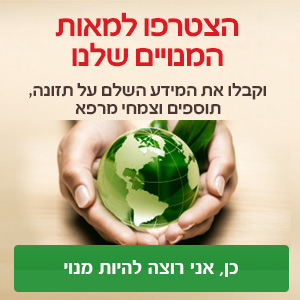חלק הצמח | איכויות | רכיבים פעילים | התוויות | מינונים | רגישות | תופעות לוואי |
מינון יתר | אזהרות | התוויות נגד | רעילות | אינטראקציות | הריון | הנקה
מקור השם הלטיני הינו ביוונית ומשמעותו צמח תבלין ארומטי.
הל משמש כתבלין במטבח הביתי, לתבשילים, למאפים ולקפה.
הל הינו צמח רב-שנתי עשבוני, מוצאו בהודו.
הל מותר לשיווק בישראל.

חלק הצמח בשימוש
זרעים.
איכויות
טמפרטורה: חמים.
לחות: יבש.
טעם: ארומטי, מעט מריר, מתקתק, חרפרף.
רכיבים פעילים עיקריים
שמן נדיף (2%-8%. מכיל בעיקר פנולים ומונוטרפנים), סטרולים, חומצות שומן.
התוויות
גזים, בעיות ספיגה, תסמונת המעי הרגיש, בחילות, כאבי בטן עוויתיים, קשיי עיכול (דיספפסיה).
מינונים
תמצית נוזלית בריכוז 1:3, 60% אלכוהול –6-12 מ"ל ביום.
מרתח – 1-5 גרם ביום.
בפורמולה – 15%-30%.
רגישות
לא ידועה רגישות מיוחדת.
קיימים דיווחים בודדים אודות למידע השלם למנויים
תופעות לוואי ומינון יתר
לא ידועות תופעות לוואי.
לא ידוע על מינון יתר.
אזהרות וצעדי מנע
יש לנקוט זהירות במתן הל לאנשים הסובלים מ למידע השלם למנויים
התוויות נגד
לא ידועות התוויות נגד.
רעילות
לא ידוע על רעילות הנובעת משימוש בהל במינונים המקובלים.
לא נצפתה כל רעילות בעכברים שקיבלו בהזרקה בטנית או תת-עורית תמצית הידרואלכוהולית (aqueous ethanol) מזרעי הל בריכוז למידע השלם למנויים
תגובות הדדיות עם תרופות / צמחי מרפא / תוספי תזונה
חילוף חומרים תרופתי - למידע השלם למנויים
תרופות נוגדות קרישה - למידע השלם למנויים
תרופות להורדת לחץ דם (חוסמי תעלות סִידן, משתנים) - למידע השלם למנויים
תרופות המדכאות את מערכת העצבים המרכזית (ברביטוראטים) - למידע השלם למנויים
כימותרפיה - למידע השלם למנויים
תרופות נוגדות דלקת (מכילות סטרואידים, ושאינן מכילות סטרואידים– NSAID's) - למידע השלם למנויים
הריון
אין מספיק מידע בנושא.
במחקרים שנערכו בתנאי מעבדה, למידע השלם למנויים
הנקה
אין מספיק מידע בנושא.
יחד עם זאת, שימוש רפואי מסורתי בהל נהוג למידע השלם למנויים
מקורות
- Seetharam KA, Pasricha JS. Condiments and contact dermatitis of the finger tips. Indian Journal of Dermatology, Venerology, and Leprology, 1987, 53:325–328.
- Dooms-Goossens, A., Dubelloy, R., and Degreef, H. Contact and systemic contact-type dermatitis to spices. Dermatol.Clin 1990;8(1):89-93.
- Blumenthal M et al. The complete German Commission E monographs: Therapeutic guide to herbal medicines. Austin, TX, American Botanical Council, 1998.
- Mokkhasmit M et al. Pharmacological evaluation of Thai medicinal plants. Journal of the Medical Association of Thailand, 1971, 54:490–504.
- Banerjee, S., Sharma, R., Kale, R. K., and Rao, A. R. Influence of certain essential oils on carcinogen-metabolizing enzymes and acid-soluble sulfhydryls in mouse liver. Nutr Cancer 1994;21(3):263-269.
- Ferrara P, Bersani I, Bottaro G, Vitelli O, Gatto A, del Bufalo F, Liberatore P, Romani L, Stabile A. Cardamom ingestion as a possible cause of hematuria. Indian J Pediatr. 2011 Oct;78(10):1296.
- Suneetha, W. J. and Krishnakantha, T. P. Cardamom extract as inhibitor of human platelet aggregation. Phytother.Res 2005;19(5):437-440
- Verma SK, Jain V, Katewa SS. Blood pressure lowering, fibrinolysis enhancing and antioxidant activities of cardamom (Elettaria cardamomum). Indian J Biochem Biophys. 2009 Dec;46(6):503-6.
- Gilani, A. H., Jabeen, Q., Khan, A. U., and Shah, A. J. Gut modulatory, blood pressure lowering, diuretic and sedative activities of cardamom. J Ethnopharmacol. 2-12-2008;115(3):463-472.
- El Tahir KE, Shoeb H, and et al. Exploration of some pharmacological activities of cardamom seed (Elettaria cardamomum) volatile oil. Saudi Pharmaceutical Journal (Saudi Arabia) 1997;5:96-102
- al Zuhair, H., el Sayeh, B., Ameen, H. A., and al Shoora, H. Pharmacological studies of cardamom oil in animals. Pharmacol.Res 1996;34(1-2):79-82.
- Liu, J. Q. and Wu, D. W. [32 cases of postoperative osteogenic sarcoma treated by chemotherapy combined with Chinese medicinal herbs]. Zhongguo Zhong.Xi.Yi.Jie.He.Za Zhi. 1993;13(3):150-2, 132.
- Huang, Y. B., Hsu, L. R., Wu, P. C., Ko, H. M., and Tsai, Y. H. Crude drug (zingiberaceae) enhancement of percutaneous absorption of indomethacin: in vitro and in vivo permeation. Gaoxiong.Yi.Xue.Ke.Xue.Za Zhi. 1993;9(7):392-400.
- Huang, Y. B., Fang, J. Y., Hung, C. H., Wu, P. C., and Tsai, Y. H. Cyclic monoterpene extract from cardamom oil as a skin permeation enhancer for indomethacin: in vitro and in vivo studies. Biol Pharm.Bull. 1999;22(6):642-646.
- Yamahara, J., Kashiwa, H., Kishi, K., and Fujimura, H. Dermal penetration enhancement by crude drugs: in vitro skin permeation of prednisolone enhanced by active constituents in cardamon seed. Chem.Pharm.Bull.(Tokyo) 1989;37(3):855-856.
- Yamamoto H, Mizutani T, Nomura H. Studies on the mutagenicity of crude drug extracts. I. Yakugaku Zasshi, 1982, 102:596–601.
- Hashim S et al. Modulatory effects of essential oils from spices on the formation of DNA adducts by aflatoxin B1 in vitro. Nutrition in Cancer, 1994, 21:169–175.

דוגמא למונוגרף מלא
לרכישת מנוי |
כניסת מנויים






